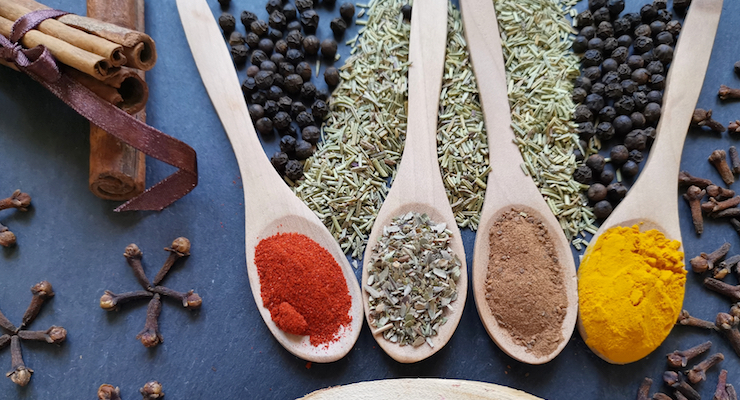Market Updates, Research
Stilbenes and Flavonoids Associated with Lower Obesity, Healthier Gut
A study of nearly 2,000 people in the U.K. linked these polyphenols with smaller waistlines and a greater diversity of bacteria in the digestive tract, independent of fiber intakes.

By: Mike Montemarano

Flavonoids, the entire family of polyphenols, and a lesser-known sub-group of polyphenols called stilbenes, have all been linked to lower rates of obesity and a greater diversity in gut microbiota independently of dietary fiber in a research article published in the journal Nutrients.
Prior to this study, which was the largest of its kind, it was unclear whether the effect was independent of dietary fiber.
Researchers from King’s College in London reached this conclusion through assessing the links between polyphenol intake, gut microbiome composition, and obesity independently of fiber intake in 1810 women and 64 men from the U.K., who were in a Discovery cohort enrolled in the TwinsUK registry, a national register of adult twin volunteers, along with a validation cohort of 64 healthy male volunteers recruited from King’s College London and the nearby areas. The main food sources of flavonoids in the cohort were tea, dark chocolate, cocoa, and fruit.
Flavonoids and non-flavonoid polyphenols, which are found in high concentrations in fruits, berries, nuts, tea, cocoa products, coffee, vegetables, soy, and red wine, in addition to dietary supplements, have long been investigated by researchers for the protective effect they may have on cardiovascular outcomes and other metabolic diseases.
Both flavonoids and non-flavonoid polyphenols were assessed through food frequency questionnaires completed by the participants, and obesity was determined through BMI calculations. Gut microbiome composition was determined by sequencing of the 16s rRNA gene sequencing in fecal samples.
Statistical analysis found that high polyphenol intake, particularly intake of stilbenes and flavonoids, were associated with statistically significant increases in gut microbiota diversity and a lower prevalence obesity, independent of fiber intakes of participants.. Particularly with flavonoids, there was a positive correlation with an increased presence of Veillonella, an energy-enhancing bacteria which functions through activating lactates in the digestive tract, and high intakes of stilbene were associated with higher presence of Faecalibacterium, which the authors described as a “key biomarker of a healthy gut.”
“Stilbenes are non-flavonoid polyphenols, characterized by the presence of a 1,2-diphenylethylenne nucleus in their structure, and include resveratrol and its derivatives,” the authors concluded. “They are present in different foods and plants at high levels, such as red grapes, red wine, some kinds of tea, berries, and peanuts, though their levels are very low in foods overall. Because of this, the association between gut microbiome diversity and stilbene intake may be a marker of other factors, such as consumption of red wine and berries, which are also very rich in other polyphenols, such as anthocyanins and flavan-3-ols. However, when we repeated the analyses adjusting for anthocyanins and flavan-3-ols, the results remained the same, suggesting that the effect of stilbenes is independent. Several small studies have found that polyphenols might be effective in preventing small increases in weight during periods of overfeeding, although there is no evidence for them reducing weight. Our finding of a 20–23% lower prevalence of obesity with higher intakes of total flavonoids and stilbenes, of which up to 11% is mediated by microbial diversity, highlights the public health importance of these results. By increasing the dietary intake of polyphenols, it may be possible to prevent some of the weight gain which is constantly increasing worldwide.”
Currently, most dietary guidelines around the globe recommend daily fiber intakes, but do not take into account specific intakes of stilbenes and flavonoids despite the health benefits with which they’ve been associated. The authors of this study indicated that the beneficial impact of polyphenol consumption highlighted by the present study warrants further investigations using clinical dietary intervention models in order to provide a sustainable basis of evidence for dietary recommendations regarding polyphenols of all kinds, especially given that each sub-class of flavonoids and non-flavonoids appears to possess unique and independent characteristics.


